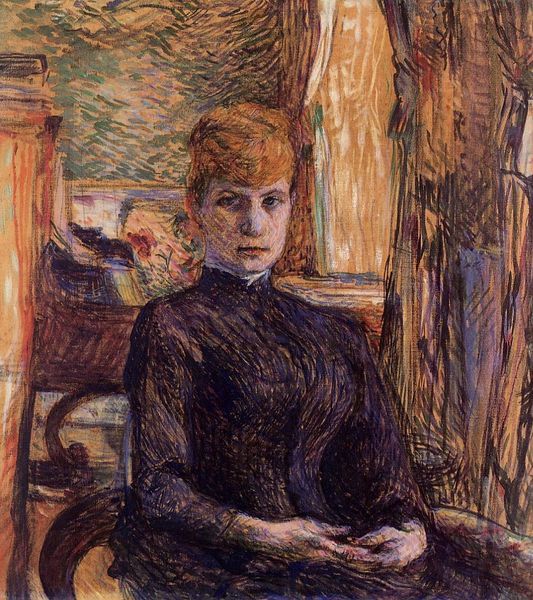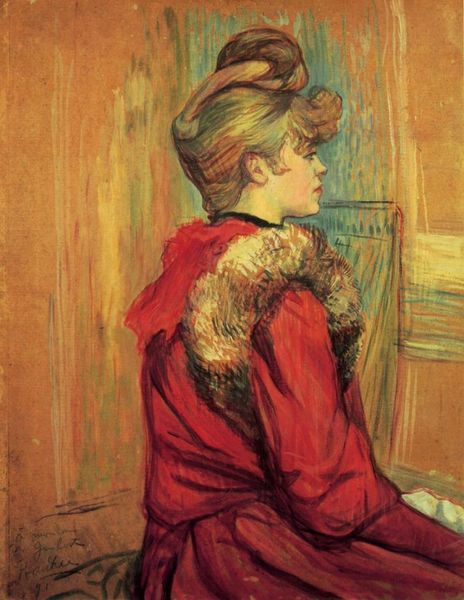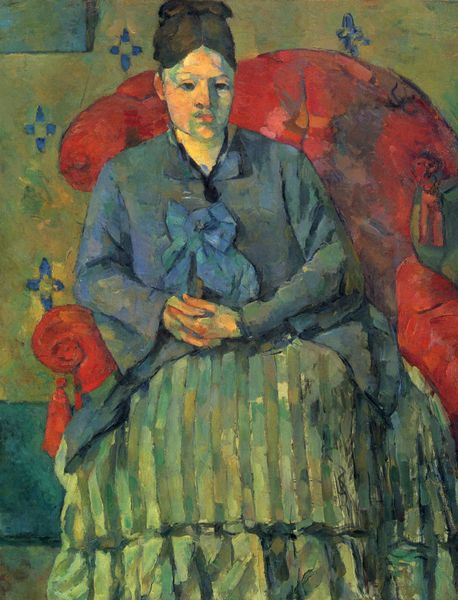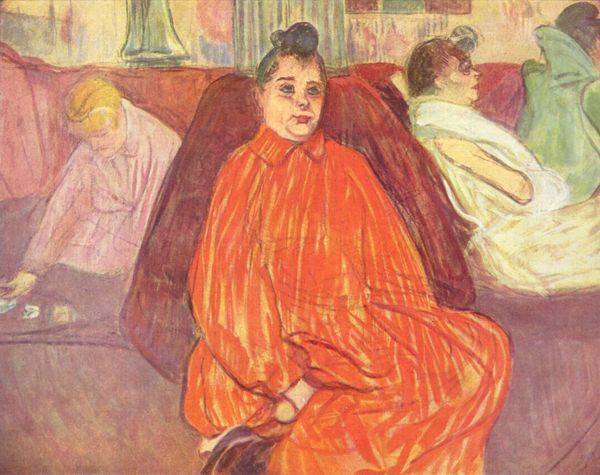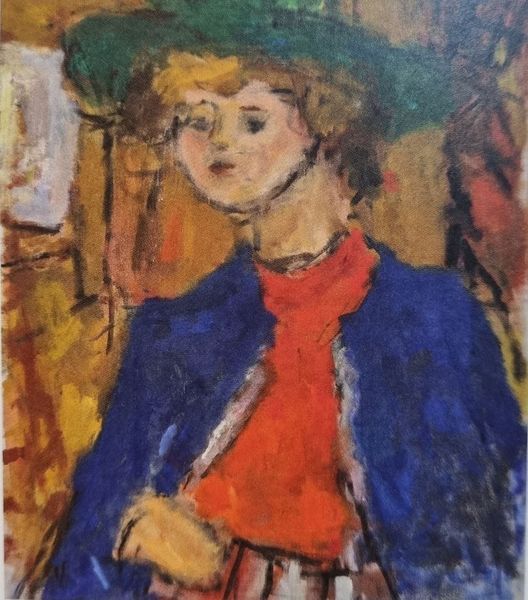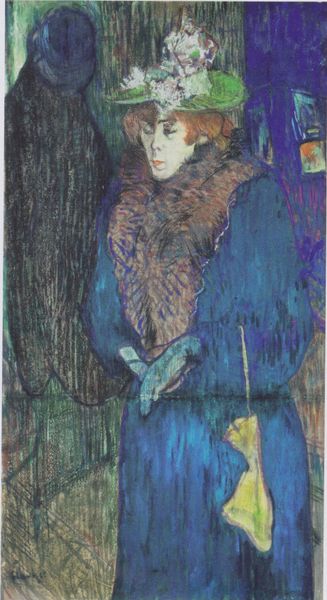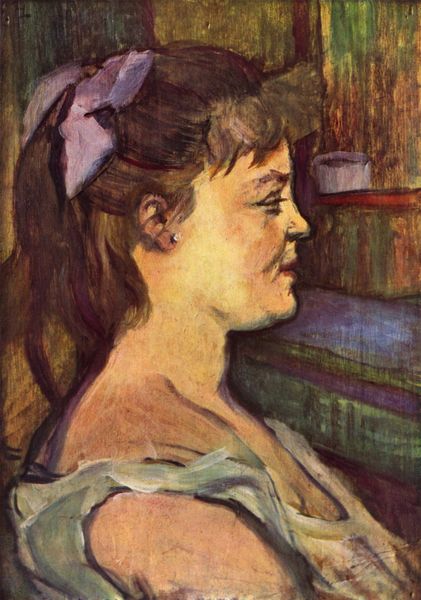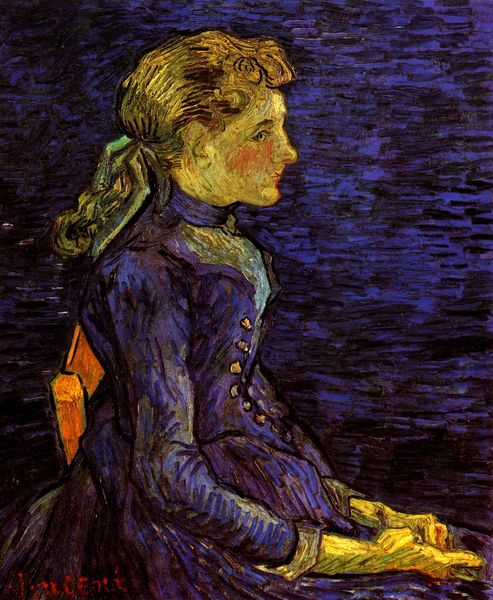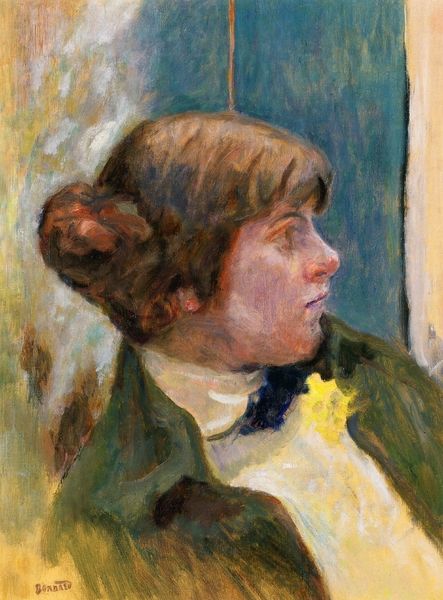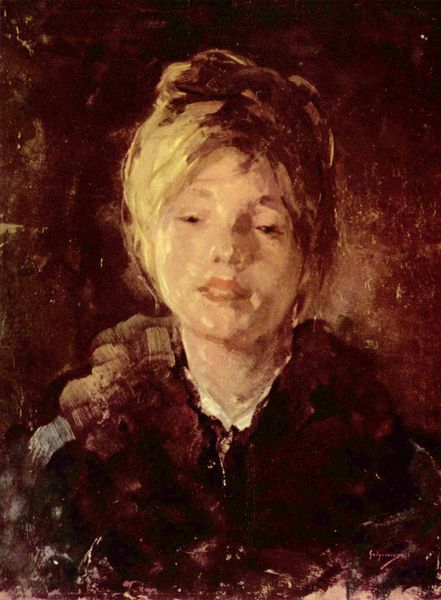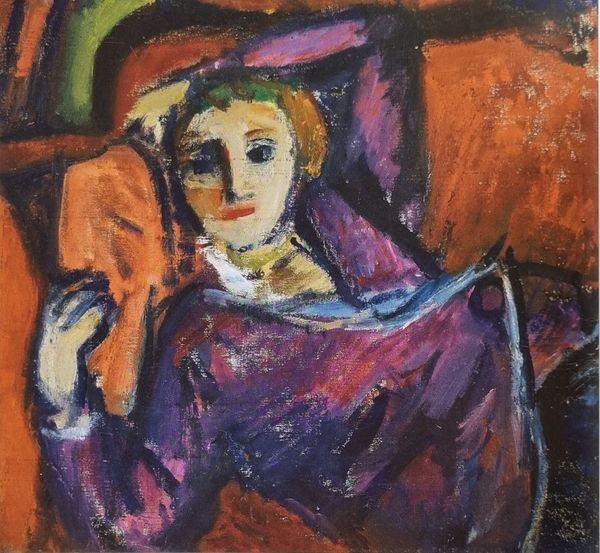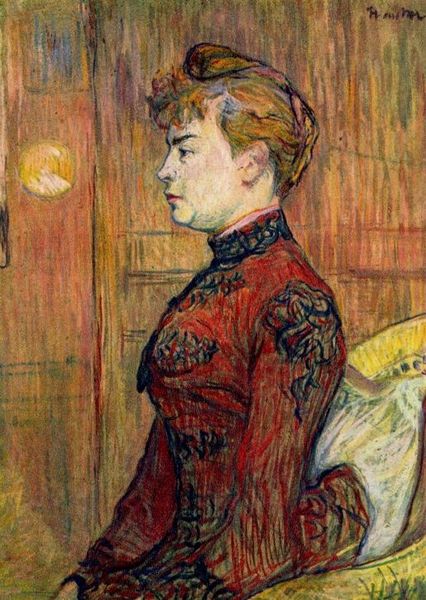
Dimensions: 49 x 34 cm
Copyright: Public domain
Curator: What a fascinating, intimate portrait. This oil painting, titled "Woman Brothel," was created by Henri de Toulouse-Lautrec in 1894. Editor: There's a definite mood of introspection. The limited color palette, mostly muted blues, reds, and yellows, casts a kind of melancholic spell. It almost feels unfinished with those loose brushstrokes. Curator: Well, that immediacy is very much part of Lautrec’s style. It echoes his keen observation of fleeting moments, capturing not just a likeness, but also the psychological weight of the subject. Look at how the sharp outline around her profile almost traps her in this internal world. Editor: Trapped, yes, that's the feeling. There's also the heavy red scarf, visually prominent; its symbolism is a mystery. Is it meant to signal something about her profession or social standing, maybe as a perversion of traditional class symbols? The blonde hair too is fascinating: what are the social connotations of the hairstyle and color? Curator: Given the painting’s context – its presumed subject and title – the red scarf could definitely carry connotations of passion, danger, even sacrifice, typical in artistic depictions of similar women. The woman's gaze, directed away from the viewer, hints at resignation, or perhaps deep contemplation about her position in a world dominated by the desires of men. Remember Lautrec frequented brothels and often sought to dignify the lives of these women. He wasn't there to judge, but to witness and to record, elevating these everyday characters of fin-de-siècle Paris, granting them a monumental quality. Editor: True. What appears sketchy is, on closer look, a constructed statement about modern urban alienation. But does idealizing these women run the risk of overlooking the exploitative nature of that world? I still think her facial expression might be suggesting she has little say about anything in that time and place. Curator: A crucial point, and a complex one. Lautrec wasn't presenting a flawless portrait; he captured vulnerability along with a certain stoicism, sparking just this kind of discourse. He makes us confront the discomfort. Editor: A powerful painting; it is much more layered than I first perceived it to be. Curator: Precisely. It's a great testament to the continuing resonance of the post-Impressionists, especially when approached with eyes alert to culture and symbol.
Comments
No comments
Be the first to comment and join the conversation on the ultimate creative platform.


